Command reference¶
This documentation is still missing many parts. Refer to the [Nodebox documentation](https://www.nodebox.net/code/index.php/Reference) for the best reference in the meantime.
Drawing shapes¶
-
rect(x, y, width, height, roundness=0, draw=True, fill=None)¶ Draw a rectangle on the canvas.
Parameters: - x – top left x-coordinate
- y – top left y-coordinate
- width – rectangle width
- height – rectangle height
- roundness – rounded corner radius
- draw (boolean) – whether to draw the shape on the canvas or not
- fill – fill color
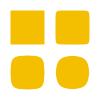
rect(10, 10, 35, 35) # see how roundness affects the shape rect(55, 10, 35, 35, 0.3) rect(10, 55, 35, 35, 0.7) rect(55, 55, 35, 35, 1)
-
ellipse(x, y, width, height, draw=True)¶ Draw an ellipse on the canvas. Same as oval().
Parameters: - x – top left x-coordinate
- y – top left y-coordinate
- width – ellipse width
- height – ellipse height
- draw (boolean) – whether to draw the shape on the canvas or not
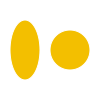
ellipse(10, 20, 30, 60) ellipse(50, 30, 40, 40) # circle
-
arrow(x, y, width, type=NORMAL, draw=True)¶ Draw an arrow on the canvas.
Parameters: - x – arrow tip x-coordinate
- y – arrow tip y-coordinate
- width – arrow width (also sets height)
- type (NORMAL or FORTYFIVE) – arrow type
- draw (boolean) – whether to draw the shape on the canvas or not
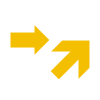
arrow(50, 40, 40) # NORMAL is the default arrow type arrow(90, 40, 40, FORTYFIVE)
-
star(startx, starty, points=20, outer=100, inner=50, draw=True)¶ Draw a star-like polygon on the canvas.
Parameters: - startx – center x-coordinate
- starty – center y-coordinate
- points – amount of points
- outer – outer radius
- inner – inner radius
- draw (boolean) – whether to draw the shape on the canvas or not
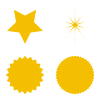
star(25, 25, 5, 20, 10) # top left star(75, 25, 10, 20, 3) # top right star(25, 75, 20, 20, 17) # bottom left star(75, 75, 40, 20, 19) # bottom right
-
line(x1, y1, x2, y2, draw=True)¶ Draw a line from (x1,y1) to (x2,y2).
Parameters: - x1 – x-coordinate of the first point
- y1 – y-coordinate of the first point
- x2 – x-coordinate of the second point
- y2 – y-coordinate of the second point
- draw (boolean) – whether to draw the shape on the canvas or not
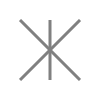
stroke(0.5) strokewidth(3) line(20, 20, 80, 80) line(20, 80, 80, 20) line(50, 20, 50, 80)
-
rectmode(mode=None)¶ Change the way rectangles are specified. Each mode alters the parameters necessary to draw a rectangle using the
rect()function.Parameters: mode (CORNER, CENTER or CORNERS) – the mode to draw new rectangles in There are 3 different modes available:
- CORNER mode (default)
- x-value of the top left corner
- y-value of the top left corner
- width
- height
- CENTER mode
- x-coordinate of the rectangle’s center point
- y-coordinate of the rectangle’s center point
- width
- height
- CORNERS mode
- x-coordinate of the top left corner
- y-coordinate of the top left corner
- x-coordinate of the bottom right corner
- y-coordinate of the bottom right corner
So while you always specify 4 parameters to the
rect()function, you can userectmode()to change the function’s behaviour according to what might suit your script’s needs.
Bézier paths¶
-
beginpath(x=None, y=None)¶ Begin drawing a Bézier path. If x and y are not specified, this command should be followed by a
moveto()call.Parameters: - x (float or None) – x-coordinate of the starting point
- y (float or None) – y-coordinate of the starting point
-
moveto(x, y)¶
-
relmoveto(x, y)¶
-
lineto(x, y)¶
-
rellineto(x, y)¶
-
curveto(x1, y1, x2, y2, x3, y3)¶
-
arc(x, y, radius, angle1, angle2)¶
-
closepath()¶
-
endpath(draw=True)¶
-
drawpath(path)¶
-
autoclosepath(close=True)¶
-
findpath(points, curvature=1.0)¶
Images¶
-
drawimage(image)¶ - image: Image to draw
- x: optional, x coordinate (default is image.x)
- y: optional, y coordinate (default is image.y)
Transforms¶
-
transform(mode=None)¶ Parameters: mode (CORNER or CENTER) – the mode to base new transformations on
-
translate(xt, yt, mode=None)¶
-
rotate(degrees=0, radians=0)¶
-
scale(x=1, y=None)¶
-
skew(x=1, y=0)¶
-
push()¶
-
pop()¶
-
reset()¶
Colors¶
- Colors can be specified in a few ways:
- grayscale: (value)
- grayscale with alpha: (value, alpha)
- RGB: (red, green, blue)
- RGBA: (red, green, blue, alpha)
- hex: (‘#FFFFFF’)
- hex with alpha: (‘#FFFFFFFF’)
You can use any of these formats to specify a colour; for example, fill(1,0,0) and fill(‘#FF0000’) yield the same result.
-
background(*args)¶
Set background to any valid color
-
outputmode()¶ Not implemented yet (Nodebox API)
-
colormode(mode=None, crange=None)¶
Set the current colormode (can be RGB or HSB) and eventually the color range.
If called without arguments, it returns the current colormode.
- mode: Color mode, either “rgb”, or “hsb”
- crange: Maximum scale value for color, e.g. 1.0 or 255
-
colorrange(crange)¶
By default colors range from 0.0 - 1.0 using colorrange other defaults can be used, e.g. 0.0 - 255.0
- crange: Color range of 0.0 - 255:
-
fill(*args)¶
Sets a fill color, applying it to new paths.
- args: color in supported format
-
stroke(*args)¶
Set a stroke color, applying it to new paths.
- args: color in supported format
-
nofill()¶
Stop applying fills to new paths.
-
nostroke()¶
Stop applying strokes to new paths.
-
strokewidth(w=None)¶ - w: Stroke width.
- return: If no width was specified then current width is returned.
-
color(*args)¶ - args: color in a supported format.
- return: Color object containing the color.
Color¶
[TODO: Describe all the possible color syntax options, and link the above commands to these.]
Text¶
-
text(txt, x, y, width=None, height=1000000, outline=False, draw=True)
Draws a string of text according to current font settings.
- txt: Text to output
- x: x-coordinate of the top left corner
- y: y-coordinate of the top left corner
- width: text width
- height: text height
- outline: If True draws outline text (defaults to False)
- draw: Set to False to inhibit immediate drawing (defaults to True)
- return: Path object representing the text.
-
font(fontpath=None, fontsize=None)¶
Set the font to be used with new text instances.
Accepts TrueType and OpenType files. Depends on FreeType being installed.
- fontpath: path to truetype or opentype font.
- fontsize: size of font
- return: current current fontpath (if fontpath param not set)
-
fontsize(fontsize=None)¶
Set or return size of current font.
- fontsize: Size of font.
- return: Size of font (if fontsize was not specified)
-
textpath(txt, x, y, width=None, height=1000000, draw=False)¶
Generates an outlined path of the input text.
- txt: Text to output
- x: x-coordinate of the top left corner
- y: y-coordinate of the top left corner
- width: text width
- height: text height
- draw: Set to False to inhibit immediate drawing (defaults to False)
- return: Path object representing the text.
-
textmetrics(txt, width=None, height=None)¶ - return: the width and height of a string of text as a tuple (according to current font settings).
-
textwidth(txt, width=None)¶ - return: the width of a string of text according to the current font settings.
-
textheight(txt, width=None)¶ - return: the height of a string of text according to the current font settings.
-
lineheight(height=None)¶
Set text lineheight.
- height: line height.
-
align(align="LEFT")¶
Set text alignment
- align: Text alignment (LEFT, CENTER, RIGHT)
-
fontoptions(hintstyle=None, hintmetrics=None, subpixelorder=None, antialias=None)¶ Not implemented yet.
-
autotext(sourceFile)¶
generates mock philosophy based on a context-free grammar
Utility functions¶
-
random(v1=None, v2=None)¶
-
grid(cols, rows, colSize=1, rowSize=1, shuffled=False)¶
-
files(path="*")¶ You can use wildcards to specify which files to pick, e.g.
>>> f = files('*.gif')Parameters: path – wildcard to use in file list.
-
snapshot(filename=None, surface=None, defer=None, autonumber=False)¶ Save the contents of current surface into a file or cairo surface/context.
Parameters: - filename – File name to output to. The file type will be deduced from the extension.
- surface – If specified will output snapshot to the supplied cairo surface.
- defer (boolean) – Decides whether the action needs to happen now or can happen later. When set to False, it ensures that a file is written before returning, but can hamper performance. Usually you won’t want to do this. For files defer defaults to True, and for Surfaces to False, this means writing files won’t stop execution, while the surface will be ready when snapshot returns. The drawqueue will have to stop and render everything up until this point.
- autonumber (boolean) – If true then a number will be appended to the filename.
Core¶
-
ximport(libName)¶ Import nodebox libraries.
The libraries get _ctx, which provides them with the nodebox API.
Parameters: libName – Library name to import
-
size(w=None, h=None)¶ Sets the size of the canvas, and creates a Cairo surface and context. Only the first call will actually be effective.
-
speed(framerate)¶
Set animation framerate.
- framerate: Frames per second to run bot.
- return: Current framerate of animation.
-
run(inputcode, iterations=None, run_forever=False, frame_limiter=False)¶ Executes the contents of a Nodebox or Shoebot script in the current surface’s context.